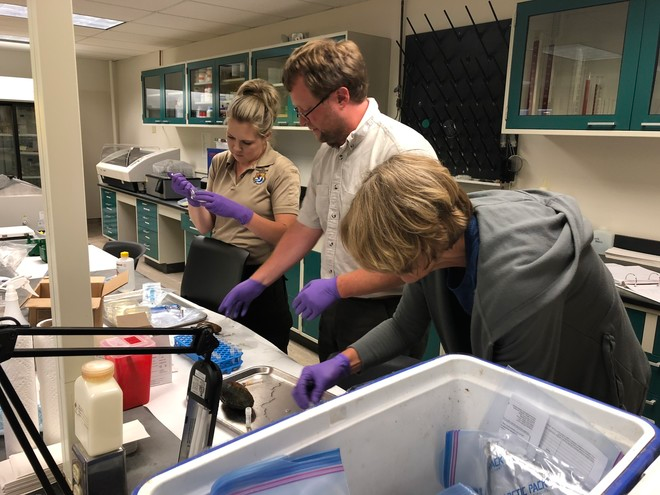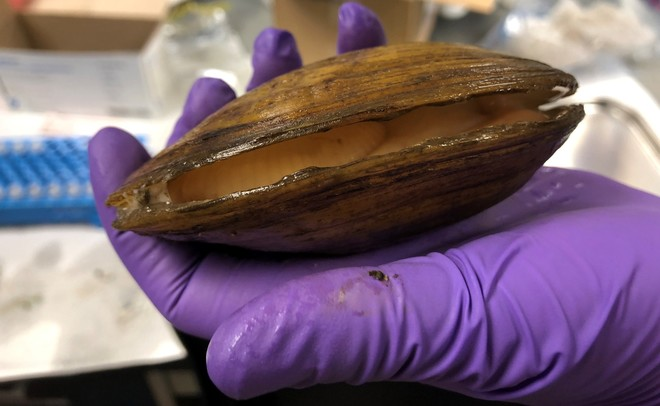By Gretchen Newberry, Midwest Fisheries Center

Biologists in the lab collect samples from dead and dying mussels to be tested for viruses. Credit: Gretchen Newberry, USFWS
Eric Leis and Sara Erickson from the Midwest Fisheries Center, along with Diane Waller of the U.S. Geological Survey (USGS), are investigating a mussel die-off in Michigan. Michigan State University and the Michigan Department of Natural Resources collected a sample of dead and dying mussels. Die-offs tend to happen in the fall. Please contact (Eric_Leis@fws.gov) if you find mussels that are gaping (like the picture below), floating at the surface, or laying on their side. The biologists are collecting hemolymph (the mussel’s circulatory fluid), and samples from the mantle (lining the shell) and the foot (the structure that pushes out from the shell used for digging and locomotion). The samples will be tested for viruses. The Mussel Mortality Network, a cooperative effort between U.S. Fish and Wildlife Service, USGS, and many other partners, has identified 20 new viruses, and the number climbs with each new die-off event.

Close up of a bivalve mollusk gaping. Credit: Gretchen Newberry, USFWS
